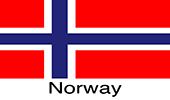FSNAU Food Security Technical Series Report Post Deyr 2012/13
Issued: March 1, 2013
While the number of people in need of humanitarian assistance in Somalia has halved to 1.05 million since August 2012, malnutrition rates remain among the highest in the world, according to the latest data released today. Humanitarian assistance to protect livelihoods, reduce acute malnutrition, and help the most food insecure populations is needed over the next six months. The underlying vulnerability of poor households also requires action to address the causes and reduce the risks of food and nutrition insecurity by increasing the resilience of existing livelihoods.
A new report by the Food Security and Nutrition Analysis Unit (FSNAU) of the UN’s Food and Agriculture Organization (FAO) with the Famine Early Warning Systems Network (FEWS NET) warned that although average rains in Somalia boosted food production and livestock farming, these gains could easily be reversed. Following two consecutive seasons of extreme drought, the UN declared famine in parts of southern Somalia in August 2011. During the 2011 Gu season, the harvest only reached an estimated 26 percent of average, and 4 million people required humanitarian assistance.
Food security conditions improve
The recent improvements in food security are attributed to continued humanitarian interventions, which improved food stocks at the household and market levels from the ongoing 2013 Deyr harvest, sustained high livestock prices, and improved milk availability during the October to December Deyr rainy season across many pastoral areas of Somalia. Following the famine declaration in 2011, sustained humanitarian response and multiple seasons of below average on occasion but also good rainfall in most parts of the country increased agricultural and livestock production and household purchasing power.
The average October to December Deyr rains boosted maize and sorghum production, yielding what may be the largest cereal harvest in nearly ten years. Substantial cash crop production also occurred as some farmers shifted from cereals to more profitable sesame. The recent multi-agency assessment found high production in Bay Region, which contributes more than half of Somalia’s sorghum production, as well as in Lower and Middle Shabelle Regions. However, a few areas in the South are likely to have a poor harvest in January and February due to late and erratic Deyr rainfall.
Areas still in crisis
Most areas of Somalia are currently classified as Stressed (IPC Phase 2), where the poor have minimally adequate food consumption, cannot afford essential non-food expenditures, and are unable to maintain their livelihoods. In several areas, food insecurity is more severe.
With poor rains in the northwestern coastal area of the Gulf of Aden since 2010, pastoralists are struggling with poor pasture conditions, low water availability, and diminished self-employment opportunities. The ongoing December to February Hays rainy season has not significantly improved these conditions so far. Many households, unable to meet their food needs, are classified in Crisis (IPC Phase 3).
Sheep pastoralists in the coastal areas of central Somalia have very small herds. The recent season did little to improve grazing areas. These areas remain classified at Crisis (IPC Phase 3).
Following maize crop losses due to multiple dry spells during the October to December Deyr rains, households in the agropastoral areas of Jamame District in the Lower Juba region also are in Crisis (IPC Phase 3). Contributing factors include: the lack of a current harvest, poor stocks from previous harvests, and low and declining holdings of livestock to sell for food.
Destitute pastoralists throughout the country continue to struggle living in deplorable conditions with limited access to food and other basic needs. In the coastal areas of Central, some of these destitute pastoralists have started shifting back into pastoralism. These groups are classified in Emergency (IPC Phase 4).
The United Nations estimates that 1.1 million are internally displaced persons (IDPs) in Somalia. An estimated 615,000 of the IDPs are in food security crisis. Most of the major IDP settlements are in Emergency (IPC Phase 4).
In total, 1.05 million in acute food insecurity represents about 14 percent of the total population. At the height of the famine, 4 million people, or nearly half of the Somali population, were in food security crisis.
Malnutrition
An estimated 215 000 children under five years of age are acutely malnourished, out of which at least 45 000 are severely malnourished. Two-thirds of these children are in the conflict-stricken southern regions. Although the nutritional situation has slightly improved in the country, with one in seven children acutely malnourished, and one in thirty-three severely malnourished, the situation remains one of the worst in the world. With reduced access to basic services, such as health care and clean water, the ability for these children to reach their potential is severely restricted.
Outlook
Over the coming months, most of Somalia will be in the Jilaal dry season. The productivity of livestock will seasonally decrease. While no major changes in food security classification are expected between now and June, livelihoods in Somalia remain at risk to a wide variety of hazards. Early forecasts are that the April to June Gu rains will be normal to below normal. A normal or near normal Gu would allow households to continue meeting their food needs, recover from previous crises, and build assets. However, in the case of a poor season an increase in numbers of households in food security crisis would be expected.


















